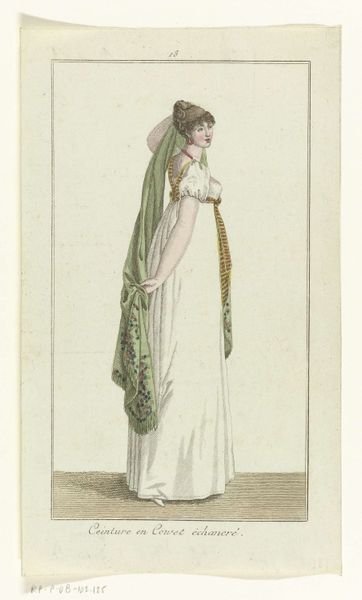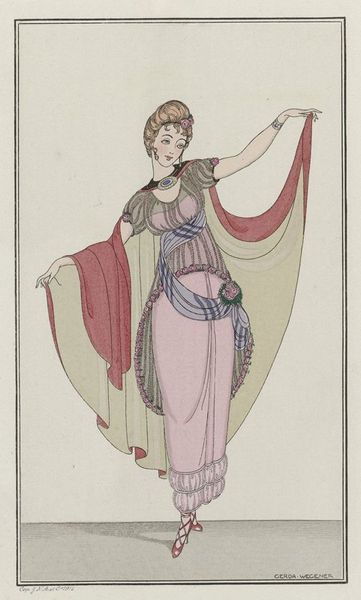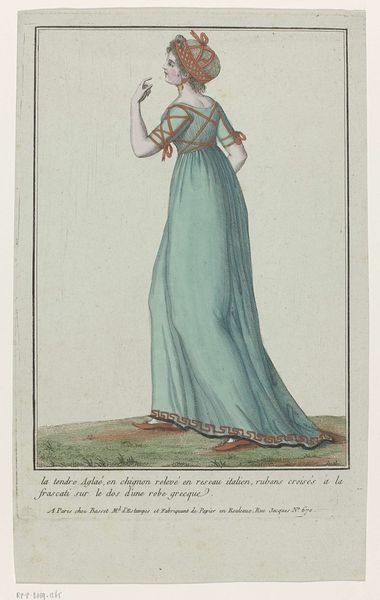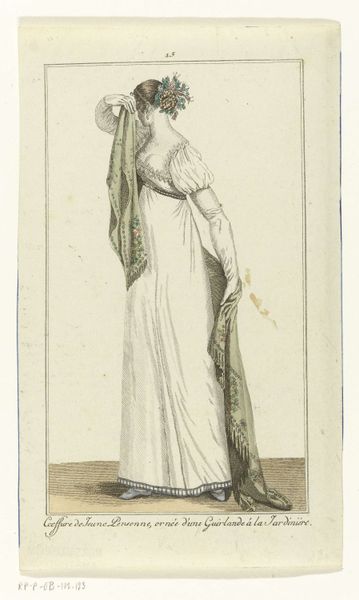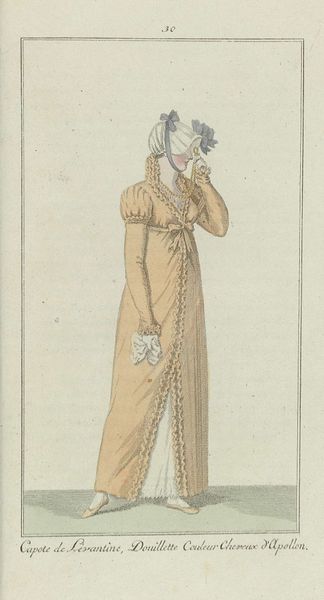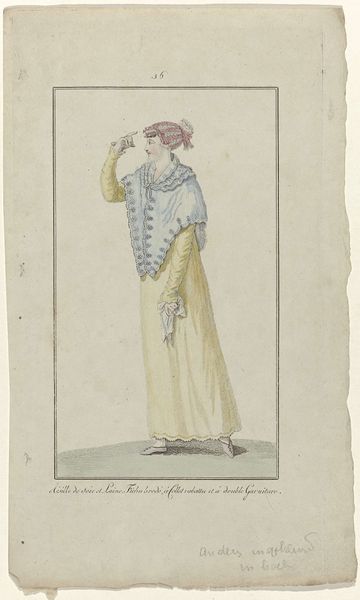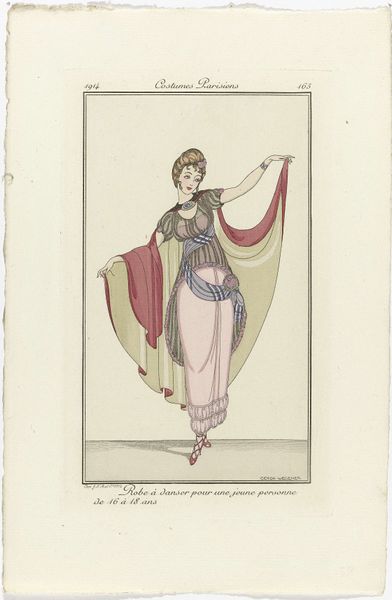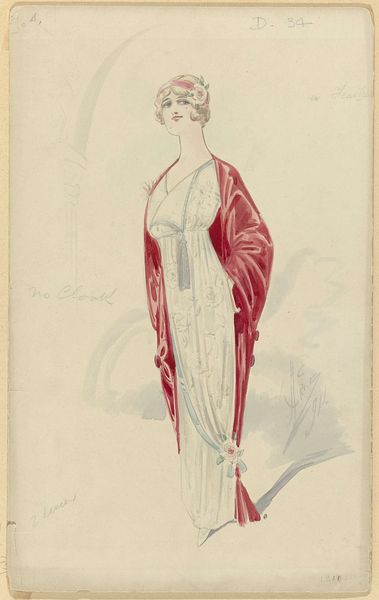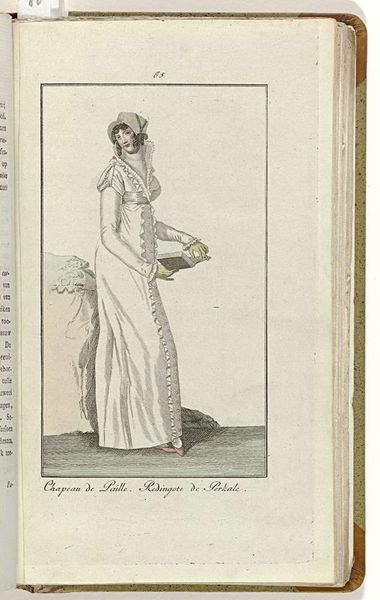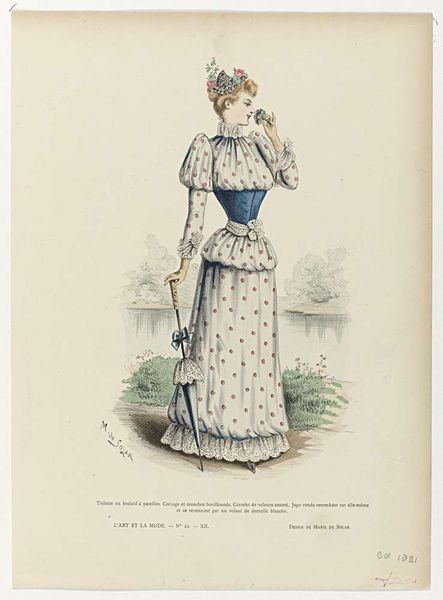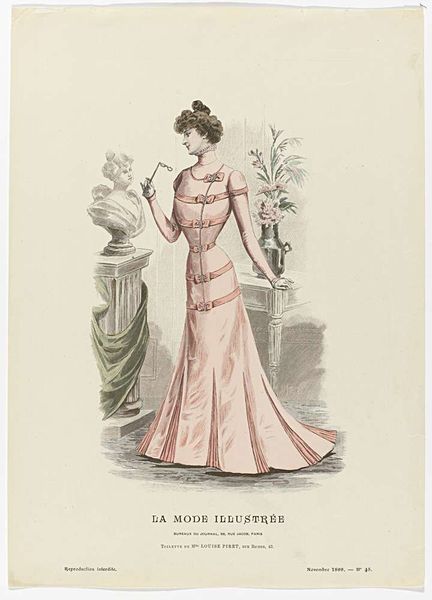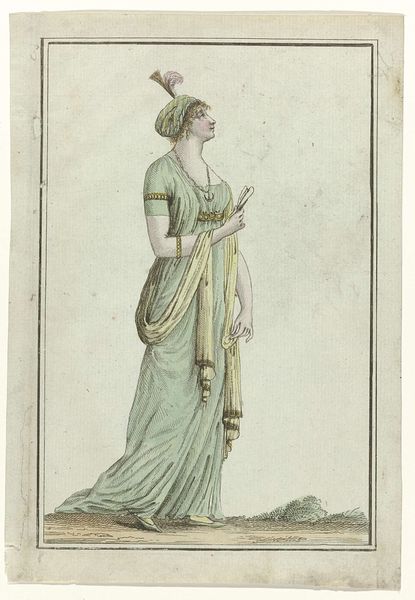
Journal des Dames et des Modes, 1912, Costumes Parisiens, no. 26: Deshabillé de Mousselin (...). 1912
0:00
0:00
drawing, print, watercolor
#
portrait
#
drawing
#
art-nouveau
# print
#
figuration
#
watercolor
#
watercolour illustration
#
decorative-art
Dimensions: height 180 mm, width 110 mm
Copyright: Rijks Museum: Open Domain
Curator: Welcome to this audio guide entry, where we will explore a print entitled “Journal des Dames et des Modes, 1912, Costumes Parisiens, no. 26: Deshabillé de Mousselin (…),” credited to Fernand Siméon, circa 1912. Editor: Immediately, the languid grace of this figure stands out; it’s all gentle curves and soft light, really a lovely illustration. Curator: Absolutely. Note how the artist employs watercolor and drawing techniques, resulting in subtle tonal variations and delicate outlines that define the form. The drapery is skillfully rendered, conveying the softness of the muslin. Editor: But, beyond the technique, this piece captures a specific moment in time, doesn't it? A moment when the representation of women in fashion publications started subtly challenging traditional roles. It evokes a sense of burgeoning female independence within societal constraints, though. Curator: An interesting assertion, given the print’s overt focus on aesthetic elegance and fashion. Semiotically, the costume itself becomes the focal point – it communicates luxury, style, and a certain social status within the Parisian milieu. The vertical composition emphasizes the line and form of the garment, right? Editor: Perhaps, but I read more. It is also possible that these types of intimate self-portraits speak to new attitudes around self-expression in the early 20th century for women, when one’s attire may speak to power. Curator: A valid point. However, I see the visual weight and compositional balance is provided by the placement of the mirror, it gives her space to exist. I wonder if we're imbuing our own anxieties on this. Editor: But can we ignore the implicit critique of consumer culture that these kinds of images inadvertently perpetuate, the societal pressures to be beautiful and fashionable? Curator: I suppose you are right. The interplay of the graphic qualities—line, form, color—alongside sociocultural considerations adds a depth of understanding to this beautiful print. Editor: Agreed. When considering its historical and social context, as well as its construction, Siméon’s piece invites us to ask more critical questions. Curator: Exactly, so a successful work by Siméon—a seemingly simple fashion plate opens up fascinating avenues for analysis, bridging art history with relevant social commentary.
Comments
No comments
Be the first to comment and join the conversation on the ultimate creative platform.
